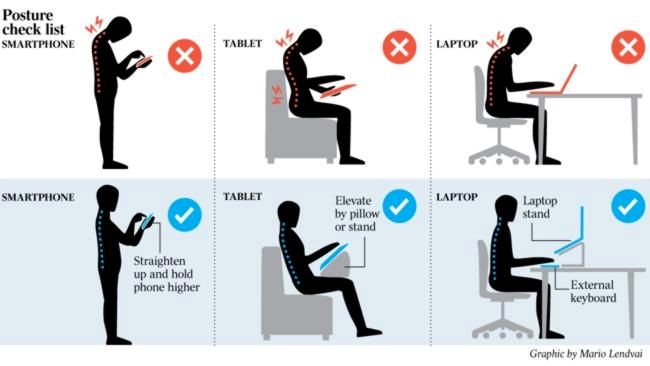In today’s digital age, a significant portion of the population, estimated at around 77%, owns a mobile phone, leading to extensive use of electronic devices, particularly smartphones. This widespread usage has brought attention to the potential musculoskeletal issues arising from poor posture while engaging with these devices. Research increasingly links prolonged phone use to various pain and dysfunction, highlighting the importance of postural awareness.
Extended periods spent on devices can lead to improper posture, such as forward neck posture, slouching, or rounded shoulders, which can strain the cervical, thoracic, and lumbar spine. Factors like the frequency of device use, the degree of neck flexion, and body position while using phones are closely associated with the severity of neck and shoulder pain. Moreover, maintaining a forward head posture over time could accelerate degenerative changes in the spine.
The mechanics of the cervical spine are particularly affected by device use. Increasing the head’s forward/downward flexion amplifies the force exerted on the cervical spine, potentially leading to increased pain. Long durations in this improper position can cause muscle imbalances, with some muscles overstretched and others contracted, leading to further pain and dysfunction.
To mitigate these risks, maintaining good posture during prolonged phone or computer use is crucial. Physical therapists specialize in addressing pain stemming from faulty positioning and movement. If experiencing pain possibly related to poor posture from mobile device overuse, seeking professional help is advisable.

Here are some tips for maintaining proper posture:
- While using a computer: Sit upright, ensuring your eyes align with the top third of the screen. Keep forearms parallel to the floor when typing, elbows by your side, and feet flat on the floor with thighs parallel to the floor. Remember to take breaks periodically.
- While using a mobile phone: Maintain an upright position, avoiding slouching. Hold the phone at eye level to minimize arm strain and find support for your elbows using various supports like your other hand, ribs, a desk, or knees. Opt for voice dictation over texting when possible.
These practices can help limit or prevent potential neck and shoulder pain associated with device use.
If you have chronic pain in your neck or back, we are here to help. Call us today or schedule online.



